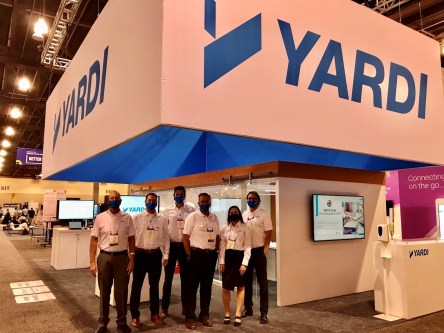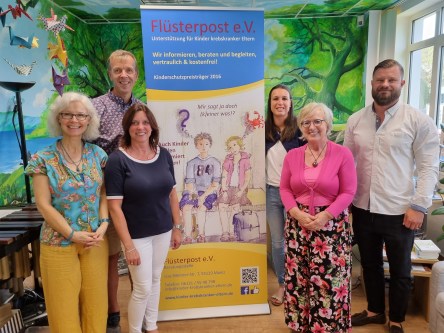Yardi client Hudson Valley Property Group (HVPG) has acquired Lincoln Park Towers in Newark, NJ. The New York-based firm recently began a major revitalization effort at the site. The project is a step forward for The City of Newark in addressing a growing call for affordable housing in the area. Lincoln Park Towers revitalization Lincoln Park Towers contains 80 units spread across 17 stories. The senior affordable property was originally constructed in 1927 and is honored as a part of the Lincoln Park Historic District. Image Courtesy of HudsonValleyPropertyGroup.com HVPG is beginning unit-level renovations as well as overall sustainability and safety upgrades: the firm will add new cabinets and countertops, eco-friendly fixtures, update smoke detectors and install emergency pull cords in all units. New amenities such as entertainment and fitness spaces, a community room with a kitchen, designated on-site parking, and laundry facilities are on the docket. The structure will also receive a makeover from top to bottom including a new roof, façade facelift and repairs to the windows and elevators. In a nod to the modern age of senior housing, HVPG is including building-wide Wi-Fi au gratis for residents. It is estimated to save residents between $40-$70 per month. The site will be updated to facilitate high speed internet for those that purchase it. The firm will complete the project without displacing residents. The undertaking has a projected cost of $15.2 million. Once complete, the housing will remain affordable thanks to a 20-year Housing Assistance Payment contract issued by the Department of Housing and Urban Development. Terms include a Section 8 agreement with units leased to residents earning no greater than 30% – 50% of the area median income. Fulfilling the mission to preserve and revitalize Lincoln Park Towers marks the final investment for HVPG’s first private equity real estate fund. The endeavor included $60 million of capital commitments and $120 million of co-investment equity. As a result, HVPG has been able to invest more than $1 billion in projects, honoring its mission to preserve the financial and physical stability of affordable housing. In total, 25 properties including more than 4,000 units will receive the updates needed to be viable housing. “HVPG has developed a consistent process for revitalizing existing housing to preserve affordability, improve quality, and increase efficiencies,” said Jason Bordainick, CEO and co-founder of HVPG during an interview with Affordable Housing Finance. “Leveraging private equity allows us to significantly expand our reach, earning a reliable return for investors while serving more residents and communities.” Fulfilling the call for affordable housing in Newark, NJ The revitalization of Lincoln Park Towers is representative of an approximately $14.7M investment into the City of Newark’s affordable housing supply. Newark Mayor Ras Baraka on recently promised to create or preserve 6,600 affordable units in Newark by 2026. Though the quantity falls short of the 16,000-unit shortage cited by researchers at Rutgers University, Baraka and his team are celebrating the step forward in the right direction. Baraka explains, “We have to keep building and doing what we can with the resources that we have and prayerfully we get some support from state resources and federal resources to continue to do this.” Read the latest updates in affordable housing on our News...
Student Housing Stays the Course
Pre-leasing picked up in July and August
As colleges get back to in-person learning this fall, Yardi Matrix reports that the student housing sector is on the rebound. On Wednesday, the Matrix team, led by Matrix vice president Jeff Alder, presented a webinar on the outlooks and tactics for investors as the student housing realm moves past the pandemic. (View the event recording here.) “There was a surge in leasing in July and August,” reported Adler. “Rent growth also moved up. The bulk of properties did extremely well. Overall, the sector has validated its business case.” As colleges and universities announced that they would resume fully in-person classes in the mid to late summer, student housing activity responded in turn. According to Matrix data, this August preleasing for Yardi 200 universities surpassed pre-pandemic levels at 91.1% preleased, while rent growth also had a significant jump at 3.4% year-over-year. One and two bedrooms led the way for rent increases, and studios, while favored at the height of the pandemic, were not as coveted. Three and four-bedroom suites began to rebound near the end of August. U.S. colleges are projected to see an enrollment spike in 2021-2022, following an academic year in which some students opted out of attending due to pandemic restrictions, finances and other factors. Thousands of universities did not require SAT or ACT scores this year, driving a surge in applications and subsequently, higher enrollment. “The bottom line is the schools are open. There may be bumps and problems (with COVID) along the way in terms of the student base. But the schools are opening, housing is happening and beds are getting filled,” Adler summarized. And that’s all good news for student housing. “Overall, we have a very positive outlook for the student housing industry, particularly at first tier institutions,” state Matrix analysts. Much of the presentation focused on the tactical components for investing in student housing, which will be a focus for Matrix moving forward. Adler introduced the sector’s forecast reports for supply and enrollment (both currently available) and rent and occupancy (coming soon). According to a poll of attendees on the webinar, 52 percent of respondents stated they are interested in investing in the sector through acquisitions and 48 percent stated they would invest through developing properties. View the webinar presentation to see all slides and data analysis. Trendlines that Yardi Matrix will continue to monitor into 2022 include: Consolidation of the higher education systemValue proposition of higher education and value of certain majors from specific universitiesDistance learning and the hybrid education modelDemographic trends impacting enrollment Consolidation is expected to be a significant ongoing factor for the industry and reflects the fact that there are fewer Gen Z college attendees than there were in the Millennial generation, Adler explained. States across the country are examining ways to streamline higher education offerings and save overhead costs. “We do expect that enrollment growth will face headwinds. Gen Z is a smaller cohort (of students) than the Millennials were, hence the consolidation expectation,” Adler said. Investors interested in the student housing sector may want to focus their efforts on major schools that are likely to withstand or even benefit from consolidation efforts in the industry, he noted. Learn more about student housing and other markets covered by Yardi...
U.S. News Ranks
Senior Living Brands
Selecting the right senior living community isn’t always easy. Whether you’re exploring communities for yourself or a loved one, it’s challenging to know which will be the best fit. So in an effort to help consumers make better decisions, U.S. News & World Report has launched a “Best Senior Living” initiative. The well-known publication will rate U.S. senior living brands, ultimately curating a list of trusted communities. Set to be released in the first quarter of 2022, this will cover individual independent living, assisted living, memory care and continuing care retirement/life plan communities. Meet the “Best Senior Living” initiative Best known for their lists of hospitals and colleges, U.S. News & World Report is entering a new arena — senior living. And unlike their “Best Nursing Homes” ratings, which incorporates data from public sources, “Best Senior Living” will survey residents and families from participating communities. To conduct the surveys — between now and the end of 2021 — U.S. News has partnered with Activated Insights. Coming from the 2,500-plus communities who have already pledged participation, C-suite executives shared their input in the program’s early stages. Others who gave advice include Argentum President and CEO James Balda, NIC President and CEO Brian Jurutka, NIC Co-Founder and Strategic Adviser Bob Kramer and LeadingAge President and CEO Katie Smith Sloan. U.S. News has already incorporated feedback, with one change being the results for CCRCs will now be presented in two categories — entry fee communities and rental communities. How to participate For communities looking to participate, the first step is taking part in the survey. Crafted for residents and families, the survey includes assisted living CoreQ questions developed by the National Center for Assisted Living. Additional questions will focus on dining, management, services, amenities and...
Argentum Launches Program...
Women in Leadership
Did you know women hold 70% of senior living management jobs? Still, despite being dominated by female leadership, the senior living industry lacks equal representation in the C-suite. That’s exactly why leading association Argentum is stepping in to drive change. We’re pleased to highlight Argentum’s Women in Leadership (WIL) mentorship program, a monumental grassroots effort to develop C-suite diversity. The program was officially launched at this year’s Argentum Senior Living Conference & Expo. Argentum kickstarts Women in Leadership program If you attended Argentum 2021, you may have witnessed the WIL launch in the “Are you building relationships or leveraging them?” session. Team Yardi was proud to attend and learn about the impactful program, which is all about opportunity and balance. Led by Collette Gray, president and CEO of Integral Senior Living, the program will guide women on their paths to more senior-level positions. And the program’s support subcommittee is something special. Including two inspiring Yardi clients, CEO of Clearwater Senior Living Danielle Morgan and COO of Thrive Senior Living Nicole Moberg, the group will support women in the program. Other subcommittee members include COO/EVP of Century Park Esmerelda Lee, CEO of Arena Myra Norton and the group’s chairwoman, CEO and Co-Founder of Connected Living Sarah Hoit. The program has four pillars of focus including education, support, celebration and measurement. Argentum anticipates an abundance of interest, too. Mainly because they’re making it easy for women to sign up via a quick online survey. Once they’re signed up, women are matched with mentors and the supportive journey begins. The Women in Leadership program is paving the way for females in senior living. We encourage you to read more about WIL...
Stronger Together
Yardi Germany + Flüsterpost e.V.
In Germany, an estimated 51% of men and 43% of women will develop cancer during their lifetime, reports medical research firm Bristol Myers Squibb. While the number of survivors is steadily increasing, so is the number of incidences amongst people of working age. One non-profit organization helps families cope with cancer diagnoses to develop greater preparedness, resiliency and hope. Clarity, communication and community at Flüsterpost e.V. Flüsterpost e.V. (Whisper Mail in English) supports children whose parents have been diagnosed with cancer. This is done primarily through counseling for parents, which coaches adults on how to handle the diagnosis with their young family members. Pictured from left – Anita Zimmermann (Founder of Flüsterpost), Bärbel Welches (Yardi), Dirk Kolbe (Yardi) Karin Burchardt (Flüsterpost), Kathrin Stahl (Yardi) and Denis Litke (Yardi). The counseling sessions encourage open and honest discussion within the family. Through discussion, families can address or resolve issues and mitigate additional psychological and physical stress for the youth and young adults in the family. Additionally, children get the chance to learn how to deal with crisis situations in a capable and self-efficient way, thus strengthen their resources and resilience. Family counseling is supplemented with additional research and resources. All services are confidential and free of charge. Clients can access services in person, by phone, email or via social media. Youth also have access to play therapy. At the center, kids can play instruments, explore the arts, participate in equine therapy, and so much more. Each activity is crafted to provide emotional support through self-expression and energetic release. Flüsterpost e.V. + Yardi Yardi is a proud sponsor of Flüsterpost e.V. Team members from the Germany office visited the site to learn more about the organization. Yardi team members Bärbel Welches, Dirk Kolbe, Kathrin Stahl and Denis Litke explored rooms that...
Fortune’s Best Workplaces...
In Aging Services
It hasn’t been an easy year, especially for senior living providers. But that hasn’t stopped certain employers from empowering their staff. Fortune has announced the Best Workplaces for Aging Services™ 2021 — recognizing companies in residential senior living and care. Fortune partners with Great Place to Work® and Activated Insights to select and honor each workplace. The recognition doesn’t come easy, either. To be certified as a Great Place to Work®, providers have to survey their employees using a 60-question trust index survey. If 70% of employees confirm the workplace’s greatness, their employer earns the Great Place to Work® honor. This year’s survey collected feedback from over 220,000 employees working in senior living across the U.S. The selected providers include 25 large workplaces, 25 small to medium employers and 15 home care companies. So which providers landed a spot on this year’s list? We’re excited to spotlight several deserving Yardi clients who have created exceptional work environments for their employees: Brightview Senior LivingSilverado Senior LivingThe Springs LivingRetirement Center ManagementAegis LivingContinuing LifeSagora Senior LivingMBK Senior LivingBenchmark Senior LivingSenior Resource GroupSummit VistaCascadia Senior LivingDominion Senior Living And these providers don’t just maintain great work environments for their employees. Each organization is committed to providing the best resident care, which surely contributes to their staff feeling motivated, fulfilled and united. To read what employees said about their prospective workplace, check out the full Great Place to Work® list. We’re proud to provide integrated senior living management software that helps these organizations create a foundation for success. Senior living thrives on Yardi The Yardi Senior Living Suite is a single connected solution that eliminates the gap between senior living property management and clinical services. The range of products — united on a single platform —...
Property Management Preparedness
Prep for Shipping Delays, Price Volatility
Imagine it: your property, November 1st, 2021. Your team is scheduled to turn six units when you get a numbing report. Your trusted suppliers are out of stock on carpet and semi-gloss paint for trim. You scramble to find a new supplier, but the cost is 14% higher and expedited shipping costs are extreme. It’s not an unlikely scenario, and you can potentially avoid it. More than 80% of the world’s goods are transported by sea. The latest records indicate that sea freight charges have increased by 547% over their seasonal average. The result on land will be more out-of-stock items and higher costs on everyday goods for your property. Property managers would be wise to plan ahead on items that they need most. International cargo shipping rates and times increase The average price of a 40-foot shipping container has quadrupled from this time last year and there was a surge of more than 53% in July, reports the Wall Street Journal. Congested ports are one of the leading problems. In the first five months of 2021, Sea-Intelligence ApS of Denmark reported record-breaking delays. Nearly 700 ships were more than a week late to their destinations along the West Coast. For comparison, there were 1,535 late arrivals throughout all of 2012-2020. This summer, a daily average of 30 containers wait in queue outside of the Ports of Los Angeles. Other factors include a shortage in containers, skeleton crews at docks, labor shortages at manufacturers and rising demand as retailers reopen in the West. When might delays plateau? Analysts foresee serious delays at least until after the Lunar New Year of 2022, mid-February at the earliest. Most Chinese factories shut down for the holiday, halting production and shipping. This may afford a few days where in-progress shipments continue while manufacturing pauses (temporarily easing the influx of ships to ports). But once workers return, they’ll have to play catch up. The delays will continue, at least for a while. How do shipping delays impact property owners? Brian Bourke, chief growth officer at Seko Logistics based in Itasca, Ill. recommends placing large trans-Pacific orders at least two months in advance of normally anticipated dates. “Global trade right now is the hottest restaurant in town,” he said. “If you want to get a reservation, you need to plan it out two months in advance.” As a result, property managers can expect shipping delays and higher prices on imported goods. Though the shipping backlog has been growing for months, price increases were nominal and less frequent. Companies lock in contractual rates with container lines. Yet as their annual contracts end, new contracted rates will reflect higher shipping costs which will, in turn, be passed to consumers. HSBC Holdings Plc estimates that a 205% increase in freight costs translates to about a 2% price increase for European producers. (The cost increase is currently closer to 550%.) Canadian businesses are passing price increases as high as 20% on to consumers for bulky items like appliances. Estimates on U.S. consumer price increases vary, but the consensus is that prices will rise. Some goods simply won’t be available, large and small items alike. From the coffee stocked in the leasing office to furniture for furnished units, “temporarily out-of-stock” will become common on supplier websites. In these cases, freight costs can compose more than 60% of product cost, become cost prohibitive for suppliers. Property manager game plan A few tips can help property managers navigate the turbulent waters ahead. Plan ahead. Use reporting tools in your maintenance operations software to understand your fall and winter trends for supplies. Transparency into maintenance operations facilitates better foresight and planning. Review what you’ve spent on supplies in previous falls and winters. This may give you a baseline of what to expect. Take a moment to research available data on price increases and shipping delays in your market. That information will allow...
Canadian Influence
On Yardi R&D
Meet Zach Scott. As vice president of programming for Yardi in Canada, Scott leads a team of engineers conducting research and development. This diverse group, primarily located in the Saskatoon and Vancouver offices, works diligently on designing and coding features for some of our leading edge solutions such as Yardi Matrix, Pulse, and IoT. Read on to learn from Scott about some of the fascinating work they do to improve Yardi’s proptech platforms on a daily basis. Are these solutions used primarily in the U.S. or throughout North America? Scott: Over the last two years these products have gained in popularity within the Canadian real estate industry and leadership at Yardi Canada is ready to support the need. Tell us about your team’s involvement in Yardi’s early development of the Internet of Things (IoT) platform? Scott: In 2018, as part of a one-month moonshot challenge, we designed a hub and built the software that now serves as the core of Yardi’s IoT platform. The hub sits in an apartment unit and bridges communication between the various smart devices in the unit and Yardi’s cloud-hosted software. We can’t reveal much about how the hub works or what exactly went into making it but what I can share is that in addition to building software solutions, Yardi has now entered the era of building hardware that connects our clients’ buildings to their business workflows. What do those efforts look like today? Scott: Every month, Yardi ships IoT hubs to be installed at client properties. With hundreds of hubs operating 24/7 today, the team has successfully turned an idea into reality. We continue to add features guided by client feedback. We also have a list of enhancements we’d like to add to the hub, features like Wi-Fi...
Exceptional Resident Experiences
UK Get Living Case Study
Get Living creates exceptional communities and neighbourhoods across the United Kingdom. Places where people can live their best lives, homes they feel they belong in, and communities they can connect in with people. The team at Get Living understand the important role technology plays in connecting residents to their communities and that delivering exceptional resident experience goes hand in hand with adopting efficient technology. We caught up with Chris Armstrong, Chief Experience Officer and Steven Osei Head of Brand Experience of Get Living to ask them how they use Yardi’s technology to improve resident experiences and business processes. “We’ve been working with the team at Yardi since 2016/2017, using a wide variety of the solutions they provide, across the entirety of our estate. We invested heavily into Yardi’s solutions to help us grow as a business and to really deliver consistency of experience,” commented Chris Armstrong. Osei expressed that since utilising Yardi’s technology, the team at Get Living have been able to reduce the steps in the applicant journey by 300%. He also explained the importance of adopting technology to achieve Get Living’s growth goals, “As a growing and scaling business with the aspirations of having 12 to 15,000 homes it’s imperative that we have the tools in place that enable us to display real time availability of homes that we have available”. Armstrong also commented that over 4,500 of their residents are registered on the RentCafe Resident App which has given their residents the platform to interact with them on a 24/7 basis, “It’s always there for them, it’s always on.” Armstrong explained that they monitor resident satisfaction by surveying residents using the resident app; freeing up their teams to focus on hands-on customer service. “The best technology is the technology that you don’t know is there, it fades into the background. That’s why we work really hard with Yardi as a partner to make that technology seamless and easy for our teams and our customers to use.” As well as explaining how Yardi’s technology currently benefits their staff and residents, Armstrong also detailed future adoption plans which will see improvements in procurement process and allow for more flexible leasing with Yardi’s technology. Watch the...
Driving for Net Zero
With help from data
Every single person in Lendlease’s 11,000-strong team has their sights set on net zero emissions by 2025. It’s a huge undertaking – one which will be impossible without the help of technology and data. This puts Richard Kuppusamy and Helen Lam – two of Lendlease’s digital leaders – in the driver’s seat as they help steer their company towards Mission Zero. Bernie Devine, regional manager for Yardi in Asia Pacific, recently caught up with the pair as part of the latest installment of Yardi’s Proptech Insights series. A big pivot Lendlease must meet its first net zero target in four years – an aggressive but “very deliberate” decision, Kuppusamy told Yardi’s audience. “Everyone who is in Lendlease today has to deal with this problem,” he emphasized. And it’s a big problem for everyone in the real estate sector, given the global built environment is responsible for almost 40% of the world’s emissions. But Lendlease – which designs, constructs and manages buildings on four continents – is in a rare position of influence across the entire development lifecycle. It is for this reason that Lendlease’s technology strategy is watched by the entire industry with interest. Kuppusamy joined Lendlease in March as Head of Lendlease Digital Asia and is based in Singapore. He oversees leadership, management and performance of Lendlease’s digital business unit across the region – and that includes Lendlease’s new property lifecycle platform, Podium. Podium links everything from building plans and construction programs to the results and realities of operation. It is the foundation of autonomous buildings, he noted. Podium supports data-driven decision-making “at every touch point” of the property lifecycle and is the key to economic and environmental sustainability. With Podium, Lendlease is “pivoting” towards a future as a “software engineering firm,” Devine observed. And that means data is now one of Lendlease’s greatest assets. Data rich, insight poor Globally, the real estate sector remains “data rich and insight poor,” Richard observed. “There are a lot of solutions, but they are all very siloed.” How do we dismantle these silos and unlock the “proprietary data jails,” as Kuppusamy called them, for a greater common good? “It’s not just about sharing – but about sharing in a meaningful way.” The industry must move away from technology that solves “spot solutions” or “siloed problems,” Helen added. “In real estate there are no silo problems – they are all interrelated.” While many systems capture data, only “actionable insights” deliver value, Kuppusamy said. Devine agreed. “I always say to our clients: ‘We deliver actionable insights, but it’s up to you to take action.’” As Head of Innovation and Development Practices in Asia, Helen Lam is responsible for identifying new ideas to be researched, tested and integrated into the way Lendlease works. One of the projects currently underway is to eliminate diesel – which is “really dirty, noisy and hazardous” – from construction sites. “We don’t have the inhouse tech to solve it all ourselves,” so Lendlease is partnering with an Asian start-up with an advanced compact and connected lithium-ion battery system. The technology eliminates 80% of onsite emissions, “is much quieter and emits zero fumes,” she explained. Data can also aid “macro decisions” that deliver a better experience for people, alongside those that are best for the planet, Lam added. Lendlease has installed Internet of Things technology in restroom facilities in retail malls across Asia, for instance, to better understand peak loads. From this data, Lendlease has enhanced the customer experience, while also “making better procurement decision around our contract negotiations and reducing operational expenditure.” Self-driving buildings Devine pointed to the use of digital twins as another tool that can help the real estate sector move towards net zero. In May, Ernst and Young reported that digital twins could save up to 35 percent on project and building costs and reduce city-level carbon emissions by between 50 and 100 percent. Lendlease has...
Yardi EHR
Enables Vaccine Tracking
With COVID-19 vaccines readily available across the nation — and with vaccine mandates becoming more common — senior living providers have an important job to do. They’re tasked with helping residents receive vaccinations, offering resources and lending support. But how can providers manage the process? Monitor symptoms? Track vaccination statuses? It’s all possible thanks to the latest upgrades in Yardi’s electronic health record solution. Tracking vaccinations with Yardi EHR Yardi EHR is a full-service solution that helps providers deliver the best resident care. And with the ongoing pandemic, the newest functionality in managing resident vaccinations may be most helpful for today’s providers. With the system’s latest infection surveillance and immunization dashboard, providers and senior care staff can document essential information relating to COVID-19 and other diseases. More specifically, staff can … Document if a resident has received, declined or missed COVID-19 vaccination appointmentsCollectively schedule vaccination appointments and track follow up assessments for community-wide vaccine clinicsBulk chart vaccine administration during clinicsLog information on a resident’s side effects post-vaccineIdentify residents who show symptoms consistent with COVID-19Send alerts to the dashboard when COVID-19 symptoms are documentedRecord when residents receive booster shots for their COVID-19 vaccineAdd indicators for other infectious diseases — all populated to the dashboard in real-time Best of all, the assessments are built-in and easy to navigate. Each assessment incorporates Centers for Disease Control and Prevention (CDC) guidelines for administering COVID-19 vaccines. If you’re an existing Yardi EHR client, adding the infection surveillance and immunization dashboard couldn’t be easier. The implementation and training process is quick — and efficient. This is especially beneficial for providers today, given the roll out of COVID-19 booster shots is around the corner. Senior living providers are navigating the pandemic day by day. And while there are many challenges, managing...
Contributing in Canada
Meet Meherzad Bakht
When it comes to teams, families and communities, communication is a key factor for success. In-person and virtual soft skills are steadily growing in importance. Yardi team member Meherzad Bakht is teaching youth how to embrace a healthy lifestyle and improve their virtual communication skills. Simultaneously, he’s honing his own soft skills and furthering his career. Overcoming challenges with tech Bakht is a Yardi Voyager sales representative based in Toronto. He’s celebrating eight years with the company. He began his career with Yardi because it brings together his “passion for real estate, sales and technology into one position.” On a typical day, Bakht learns the needs and tech requirements of prospects and clients. He then aligns them with the best technology solution(s) to help them achieve their goals. Through his work, it’s clear that he cares about helping people overcome challenges. Game On! Bakht expresses that care through community involvement. He volunteers with Greater Toronto Big Brothers, Big Sisters Game-On after school program. This virtual mentoring program is for boys ages 11 – 14. The youth learn the foundations for making healthy choices, such as physical activity, nutrition, and emotional intelligence through discussion. “I knew I wanted to work with kids and give back to the community through mentoring,” says Bakht. “Over the last several months, I have enjoyed sharing my experiences with these kids and just being a resource. This is something I didn’t have when I was growing up and I know how important that could be in someone’s life.” Join Bakht in supporting Big Brothers, Big Sisters by making a donation. Bakht understands that sometimes, youth want to talk to someone who is outside of their immediate group of friends or family. The fresh perspective on past experiences and guidance is impactful at that age. Bakht recalls one of his favorite activities, making stress balls with the kids. The organization sent the supplies to participants. Virtually, Bakht guided the kids in how to make the sensory tool using a water bottle, flour and a balloon. During the activity, they all chatted about what was on their minds. “This was a really fun experience when we are actively working together and it was great to teach them problem solving skills,” says Bakht. He continues, “I actively worked on communication and listening. They really go hand-in-hand. Youth at this age can be easily distracted, especially in a virtual environment. We have to work on keeping them engaged and active. That’s why creating the stress ball with them was such a great experience.” Mentoring offers transferrable skills “My experience with Game On is a great way for me to get additional practice for collaborating with others, internally or externally, in a virtual world,” reflects Bakht. “These are great skills to practice because as a senior account executive, I need to be able to listen to and understand our clients’ needs to communicate how Yardi can best help them.” Over the last two years, the use of property management technology has grown. Many organizations have implemented, disparate systems. Some don’t know that a fully integrated property management, accounting, leasing and marketing solution is available. But Bakht works with clients wherever they are in the tech adaption process. Once he understands the bigger picture, he can help clients reduce touchpoints, gather reliable data and reporting—all via remote access. “Technology can be a true problem solver. And my work with Game On has improved my virtual communication skills so that I can even better serve our clients.” Tips for getting involved Bakht encourages community involvement, and not to be daunted by preparation. “If others are looking to volunteer and give back to the community, I would say don’t overthink it. Do some research, see how much time you have and reach out. These organizations are in need of volunteers, so they will work with you to align your goals, skills and how...
Ready, Set, Succeed!
Yardi Atlanta + Mimosa Elementary School
Yardi Atlanta has done it again! Team members have joined forces to help students of a local school beat the odds. Through their efforts, disadvantaged youth are able to start off the year with the tools needed for success. Mimosa Elementary School: overcoming the odds Mimosa Elementary School thrives because of dedicated teachers, engaged students and active parents. The academic growth of Mimosa students is higher than 74% of schools in the state, and higher than its district. About 34% of its third-grade students read at or above the grade level target, an important milestone for youth. Mimosa Elementary School is Beating the Odds, meaning that it performs better than similar Title 1 schools. The school receives 4.7 stars on Google reviews, mostly from pleased parents. Mimosa Elementary School challenges public perception of a Title 1 school. The student body, with fewer than 800 students, rests within an Economic Opportunity Zone. Most families have incomes below the poverty line and approximately 95 percent of students qualify for free or reduced lunch rates. But the school isn’t a place of lack. Yardi Atlanta’s Back to School Supply Drive Economic challenges are met with resourcefulness, creativity and community support. Yardi Atlanta is a proud sponsor of Mimosa Elementary School. Each year, team members raise funds and buy supplies to support the Back to School Supply Drive. In its second year of remote employment, Yardi Atlanta remains dedicated to addressing real-world issues. The School Supply Drive Committee organized a virtual fundraiser to gather supplies for disadvantaged students. Participants could send donations via an electronic platform, submit cash donations through HR or supply item donations to the local office. By any means available, Yardi team members showed their support for local students. A virtual fundraiser for a largely remote group has its challenges....
Reconfiguring CRE
In Canada
How will the commercial real estate environment in Canada be reshaped as workers gain the option to return to their workplaces? Some clues are already evident. Amid the pandemic’s disruption of economic sectors and lives, it seems that many workers adjusted well to the enforced work-from-home environment. One workplace research study found that nearly two-thirds prefer either to work from home or in a home/office hybrid environment. Business are rethinking their space needs as a result. Other studies suggest ways that the pandemic shifted attitudes. For example, one survey revealed that 27% of Canadian workers feel their careers have stalled since the start of the pandemic and nearly half feel burned out, prompting concerns about team cohesion and employee retention. At the same time, more than 60% of employers consider increased worker turnover an emerging problem. Other property owners and tenants are weighing the implications of maintaining rigorous distancing and cleanliness standards. Gensler, a global architecture, design, and planning firm, notes, “We now value space and the experience of being together more than ever. The office matters as a place to come together with each other for a common purpose. And for employees, choice, privacy, unassigned seating, and health and well-being are top of mind.” Investors, meanwhile, are keeping an eye on potential new opportunities, with MSCI estimating the inventory of managed real estate held for investment at CAD $546 in 2020, a CAD $3.6 billion gain from 2019. Employee restiveness, shifting workplace expectations and health factors are spurring many property management companies to rethink operations in areas ranging from employee amenities and tenant service to investor relations and vendor management. As professional services consultant Deloitte says, “The development of emotional connections between employees and their place of work, post-COVID, will lead to lower...
3D-Printed Housing
Habitat for Humanity, Tempe
Habitat for Humanity is leading the way on innovative housing solutions. The Tempe branch is exploring 3D-printed ranch-style homes to address a growing need for housing. The flagship structure demonstrates the efficiency and beauty of combining conventional and 3D printer construction. It takes a village to print a 3D house The three-bedroom, two-bathroom house was designed by Scottsdale-based Candelaria Designs and printed by PERI group of Germany using a Build On Demand (BOD2) printer. More than 20 sponsors provided funding. The house contains 1,738 square feet of living space and a total of 2,433 square feet for the project, reports the nonprofit. Of the total square footage, 70-80% of the house will be 3D printed. The BOD2 works alongside construction crews and volunteers. It uses the gantry principle, which allows it to move in any position within the structure, printing inner and outer walls in thin layers. As it prints, human workers can continue their electrical, plumbing and other tasks. Humans will also install the ceilings. Construction is scheduled for completion in October 2021. Explore Habitat for Humanity’s earth-friendly passivehaus design. For now, the BOD2 house at 677 W. 19th St. will be one-of-a-kind. The 15 adjacent homes will be traditional builds on four city lots. Habitat for Humanity has made it clear that more 3D-printed homes are of interest. The project is a direct response to an acute affordable housing crisis in the area, reports the nonprofit. About 20% of renters are considered extremely low income. Of them, 75% of households are severely cost burdened. The phrase is used by the National Low Income Housing Coalition to describe renters spending more than 30% of their income on housing. The state would need more than 136,000 affordable units to safely house extremely low-income renters. Scalable, affordable...
Video Resumes
New Social Media Trend
Have you noticed the newest ways to recruit talent online? LinkedIn and TikTok have both launched video resumes that change the face of talent recruitment. Video resumes on TikTok and LinkedIn TikTok Resumes is currently in the pilot stage, but it is already gaining attention from major employers. The platform permits users to apply for job openings via a three-minute video resume. Major brands such as Target, Shopify and Chipotle have already begun to accept applications. The TikTok feature comes on the heels of LinkedIn video integration. Employers create a job posting that they can supplement with a Video Intro. Then employers can invite qualified applicants to submit a Video Intro that answers up to two interview questions. These invitation-only videos expedite the hiring process by decreasing scheduled, live interviews. LinkedIn reports that employers and candidates enjoy Video Intro. They find it so helpful that 70% of job posters reuse the features in subsequent job postings. About 80% of candidates opt for video responses. Real estate professionals buy in Real estate firms are investing in video postings and resumes. Downtown Apartment Co., a Chicago-based brokerage company, uses TikTok to modernize and diversify its recruiting practices. “We just posted our first TikTok hiring video in which our agents and leaders share their thoughts about why DAC is a great place to work. We’ve already seen success using TikTok, so we’re definitely interested in seeing how TikTok Resumes will work and how we might use it to enhance our recruiting efforts,” said Ben Creamer, co-founder & managing broker at DAC. Read the full story on TikTok resumes on Multi-Housing News. Why post job openings and accept video resumes via social media? Posting a job opening on social media meets applicants where they spend much of their...
September Marks
World Alzheimer’s Month
Alzheimer’s is a devastating form of dementia currently affecting millions of people worldwide. But despite being universally known, the disease can be misunderstood and met with stigma. With that, in an effort to raise global awareness, people are coming together for World Alzheimer’s Month. Led by Alzheimer’s Disease International (ADI), the month-long campaign takes place during September each year. ADI’s goal is to provide impactful information and challenge persisting misconceptions. This September marks the 10th year of the global awareness campaign. September 21 also signifies World Alzheimer’s Day, in which ADI launches their annual report to help educate the public. Raising awareness To drive the awareness campaign all month long, ADI works with associations across 120 countries. They aim to support people living with dementia, along with their dedicated caregivers and related organizations. The campaign calls for dementia to be the global health priority it needs to be. And this year’s theme, “Know Dementia, Know Alzheimer’s” focuses on the power of knowledge. The theme is present in ADI’s World Alzheimer’s Report for 2021, which stresses the importance of understanding warning signs and getting a timely diagnosis. The report also raises challenging questions for healthcare systems, governments, care managers and researchers — including powerful testimonies from those living with the disease. Getting involved ADI is sharing creative ways to get involved in this year’s campaign. Given the ongoing pandemic, most are virtual, but still a fantastic opportunity to join the conversation. You can … Engage with ADI on social media, as well as national Alzheimer’s associationsShare your own thoughts, advice and experience with Alzheimer’s in online communitiesSpread the message by using ADI’s official hashtags, including #KnowDementia, #KnowAlzheimers and #WorldAlzMonthShow support by attending a virtual event, such as an online memory walk or...
Livable Communities Act...
Affordable Housing + Transit
The Livable Communities Act of 2021 aims to develop transit alongside affordable housing, creating more efficient and equitable access to major job hubs and neighborhoods. The act attempts to tackle two contentious issued for Americans. The Livable Communities Act of 2021 The first step is to create an Office of Sustainable Communities within the Department of Housing and Urban Development (HUD). The division would “promote interagency coordination on the development of affordable housing, transit systems, and other community needs.” The Office of Sustainable Communities would have its own credit facility. From there, regional development grants would be available through the Comprehensive Planning Grant Program. Eligible recipients would demonstrate partnerships between local governments, city planning, and Indian Tribes (where applicable) and other community members to create “sustainable, affordable housing with access to transit.” In addition to sustainability, the Act includes a clause to prioritize health-conscious housing and reduce housing-related health hazards. The Act reserves 25% of funding for high-poverty communities. Such areas are greatly affected by long waitlists for affordable housing as well as a lower quality of living and a high concentration of health concerns. Sen. Bob Menendez (D-N.J.) introduced the legislation supported by Sens. Catherine Cortez Masto (D-Nev.), Chris Van Hollen (D-Md.), Ron Wyden (D-Ore.), Jack Reed (D-R.I.), Kirsten Gillibrand (D-N.Y.), Alex Padilla (D-Calif.), and Richard Blumenthal (D-Conn.). Menendez says, “Our communities are stronger when hardworking families can afford to live close to where they work. As the nation faces an affordable housing crisis, we don’t want to see teachers, first responders, grocery store clerks, restaurant staff, and other essential workers be priced out of the neighborhood.” He continues, “Creating ‘livable communities’ is all about connecting workers to good-paying jobs through expanded affordable housing options and access to good public transportation by inextricably and...
High Aspirations
QuadReal ‘Excelerates’ with Yardi
Canadian residential property manager QuadReal Property Group uses Yardi software as a single connected solution for managing multiple business operations, including utility expense management, procurement, deal pipeline management, budgeting and construction management. QuadReal recently moved to bolster its team’s professional development by adopting another solution – Yardi Aspire, which the company brands internally as Excelerate. Aspire centralized QuadReal’s training initiatives in everything from Yardi software and leadership to new-hire orientation and supervision management skills. “Prior to Aspire, people learned on the job or through ad hoc means. We’re using Aspire to bring a much more structured approach to it,” says Dean Holmes, senior vice president of residential operations for QuadReal. “There’s a significant amount of content pre-prepared within Aspire so we don’t have to start from scratch and create it all ourselves. It’s user friendly, adaptable to QuadReal’s branding and has been well accepted.” QuadReal measures its success with Aspire by proficiency that the workforce has achieved, especially in using Yardi software, the company’s principal Aspire focus so far. “We track our business performance and overall proficiency with systems and processes on a continual basis and have gotten rave reviews from our field and corporate teams on the quality of the content and the ease of use of Aspire. We’re getting a ton of mileage out of it and it’s our platform of choice for all our training,” Holmes says. Aspire assumes even greater importance in the aftermath of the pandemic. “We were decentralized even before COVID and it’s going to continue to be challenging to get everybody in the same room when it’s over,” Holmes notes. “We’ll do things in person when we can but Aspire will continue to be our primary platform for delivering training and content across our company. It’s an...
National Assisted Living Week...
Compassion, Community, Caring
The senior living industry has faced unprecedented challenges this year. And while the ongoing pandemic changed the way assisted living staff provides care, these individuals have remained dedicated to residents and their families. They’ve continued to provide the highest quality care without fail. To honor these heroes — individuals who reside, work and volunteer in assisted living communities across the country — the National Center for Assisted Living (NCAL) leads a nationwide celebration each year. Known as National Assisted Living Week (NALW), the 2021 celebration will take place from September 12-18. Each year’s celebration has a theme, too. NCAL has deemed “Compassion, Community, Caring” as the 2021 theme given the endurance and resilience of staff members during the pandemic. About National Assisted Living Week Established by NCAL back in 1995, NALW provides a unique opportunity for residents, their loved ones, staff, volunteers and local communities to celebrate senior living staff. The annual observance encourages assisted living communities to host a variety of events to honor the individuals they serve, while educating the public about long term care. This year’s celebration The NALW theme for 2021 — Compassion, Community, Caring — represents the resilience of assisted living heroes. The pandemic has created some of the most trying situations we’ve ever known, but these individuals stayed strong. This year’s NALW is the perfect opportunity to show thanks. And while NCAL encourages assisted living providers to modify events with COVID-19 safety protocols in mind, they’re still advocating that communities come together. They’re offering inspiration through their annual planning guide, a free online packet with ideas for how to recognize staff, honor residents and commemorate NALW in a safe and meaningful way. Here’s a few ideas outlined by NCAL: Engage residents in creative art projects to promote...




















